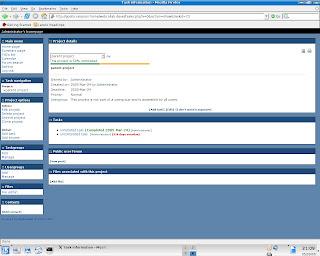firefox tweaks
Tuesday, February 24, 2009In previous versions Firefox stored this information in the worst possible format - Mork. Format extremely complicated, barely machine readable that gave the users no possibility to parse the data (for a lot of laugh check out the specification on the Wikipedia page). This was finally replaced in the new Firefox by SQLite - self contained, small footprint database.
Having database store your browsing data has one drawback, you have to optimize the database from time to time to get rid of old, deleted data, re-index the columns etc. Otherwise you keep all the junk data mixed in with your real data.
In SQLite is the statement to do this calledVACUUM;.$ for f in ~/.mozilla/firefox/*/*.sqlite; do sqlite3 $f 'VACUUM;'; done
In my case the above command in terminal effectively cut the size of urlclassifier3.sqlite and places.sqlite to half. Thus saving 20 MB in my memory and Firefox's speed improvement was very noticeable. So have fun with the vacuum cleaner
2) - open firefox
- In the adress bar type in "about:config"
- In the filter bar type in "ipv6"
- Double click "network.dns.disableIPv6" so that the value turns to TRUE
- Restart firefox
This will speed up firefox
or you can try a memory optimisation technique
http://www.thinktechno.com/


















